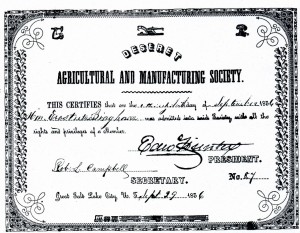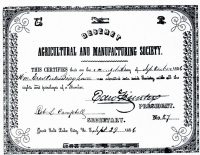The Latter-Day Saints’ second decade in the Utah Territory was marked by monumental efforts under Church direction to establish Zion by achieving economic independence from the American economic system, which they called “Babylon”.
The Church’s motivation to achieve total economic self-sufficiency for the Saints before Babylon’s fall is reflected in statements like this one by Apostle Wilford Woodruff:
“We have to build up Zion independent of the wicked; we have got to become self-sustaining, and the Lord is inspiring His prophets to preach to us to lay the foundation for the accomplishment of this work. The day is not far distant when we shall have to take care of ourselves. Great Babylon is going to fall…. It is wisdom that we should lay the foundation to provide for ourselves.”
That effort to make the Saints economically independent is well-documented in the book “Great Basin Kingdom”, where church historian Leonard J. Arrington reported on all the various industries and economic infrastructure developed directly under the Church’s direction. For example, various colonies were established specifically for the production of foods and products the Territory needed; St. George was established to raise cotton, Santa Clara was to provide grapes and other fruits, Mantua for flax, Minersville for lead, zinc and silver, Coalville for coal, and several others. They were not satisfied just to import these items but were determined to produce what they needed themselves.

Another agency created by the Church to promote the “economic unity of the territory and [assist] in its general development” was the Deseret Telegraph which connected most of the Mormon colonies with Salt Lake City with 500 miles of telegraph line using mostly volunteer labor.
In anxious expectation of Babylon’s economic collapse, the Saints, during the 1860s and beyond, were highly motivated and took high action to build Zion by becoming economically “independent above all other creatures beneath the celestial world”. Wouldn’t we be wise of us to work towards that goal individually and together?
